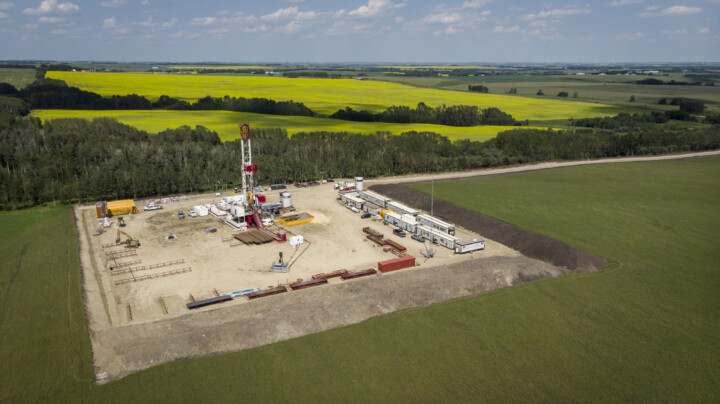On Monday, Ontario Premier Doug Ford doubled down on the advertisement his government ran in the U.S., hailing it as “the most successful ad in the history of North America” and maintaining he was defending the auto sector from being “annihilated.” However, with Trump firing back with an additional 10 percent tariff and terminating all trade talks, some economists say the premier could ironically end up seriously hurting his province’s most prized industry even more, while causing further economic destruction for Ontario.
“I am increasing the Tariff on Canada by 10 percent over and above what they are paying now,” the president announced over the weekend, not elaborating on the details of when the added levy would be imposed or what goods the tariffs would apply to.
Kevin Hassett, Trump’s National Economic Council director, told reporters “I’m sure [Trump] knows” when asked if the 10 percent additional tariff would apply to all Canadian imports, those currently exempt under CUSMA, or just sectoral tariffs such as the 50 percent on steel and aluminum, or just the baseline tariffs of 35 percent on goods outside of the trade agreement.
Economic analysts are concerned about how wide a net the president intends to cast in his additional 10 percent levy against Canada. If the 10 percent tariff includes all auto parts and vehicles, it could be grim for the sector in Ontario, which employs some 100,000 workers.
“For the auto sector. I think that’s really the one area where the difference would be quite material. The effective tariff in the auto sector right now is about 12.5 percent, bringing that up to 20, 22.5 percent. That is a big difference that’s undeniable,” University of Toronto economics professor Joseph Steinberg told The Hub. The latest data reveals the effective tariff rate on vehicles and parts exported from Canada to the U.S., after deductions from U.S.-originated and CUSMA-exempt parts, is an estimated 12.6 percent.
This year, Ontario’s auto industry has faced severe disruption from tariffs imposed by the Trump administration, which helped play a real role in rounds of layoffs and plant closures across the province. In March, President Trump imposed a 25 percent tariff on non-U.S.-made vehicles, which took effect the following month, creating a wave of uncertainty for the Canadian auto industry. “I’m focused on auto,” Ford told reporters on Monday. Since the tariffs were implemented, automotive assembly plants have announced layoffs, production cuts, and temporary shutdowns.
General Motors’ CAMI Assembly plant in Ingersoll halted production in April with plans to lay off nearly 500 of its 1,200 workers indefinitely. GM also plans to cut one shift at its Oshawa plant, resulting in more than 2,000 job losses. Stellantis triggered a two-week shutdown at its Windsor assembly plant. Most recently, the automaker cancelled plans to make Jeeps at its Brampton facility, shifting production to Illinois instead and putting 3,000 jobs at risk.
However, the jobs may have been at risk even if the Reagan ad hadn’t hit American airwaves. Earlier this month, U.S. Commerce Secretary Howard Lutnick told a Canadian crowd his country was no longer interested in buying Canadian-made cars. Currently, 92 percent of Canadian-made vehicles are exported to the U.S.
Steinberg believes things will be much more dire for Ontario’s economy, as well as Canada’s, if Trump signs an executive order imposing a 10 percent tariff on all Canadian goods as retribution.
“If it goes the other way, 10 percent across the board, including on stuff that was previously CUSMA exempt, that’s a different story,” Steinberg explained. “Ten percent on all of our oil exports, I think that’s likely to reduce exports by 10 to 15 percent in the short run across the board.”
Steinberg added that the uncertainty the tariffs have created is the most potentially damaging for the Canadian economy.
“The elephant in the room has always been, more than anything, the uncertainty about what the tariff outlook is going to be like a few years down the road…we’re unlikely to see material investments in tariff-affected sectors until all of this uncertainty has been resolved,” Steinberg explained.
Before the advertisement ostensibly derailed the U.S.-Canada trade negotiations, Prime Minister Mark Carney claimed on Monday that the two parties were close to a deal that would’ve seen sectoral tariffs dropped.
“There were a series of very detailed, very specific, very comprehensive discussions…up until the point of those ads running,” Prime Minister Carney said at the ASEAN summit in Kuala Lumpur.
The CBC also reported on confidential sources involved in the trade negotiations, asserting that Premier Ford playing “Captain Canada” had been aggravating the American side for months. Back in March, U.S. Secretary of Commerce Howard Lutnick said to the press that President Trump “needed to break some guy in Ontario” when the premier was threatening to tax energy exports to the U.S. at 25 percent. Ford, who previously said he personally came up with the (now paused) commercial, boasted it generated “a billion” impressions and was “very effective.”
“The message is very clear, protectionism does not work. And that’s the message we have to the American people,” Ford told reporters today. “We’re the third largest trading partner in the world [for the U.S.] and I wanted to get the message out there. We achieved our goal.”
If Trump is largely all bark, no bite, on the 10 percent tariff threat, Canada wouldn’t be hit all that hard, according to Steinberg.
“If it is indeed only on an additional 10 percentage points on top of the sectoral tariffs [like lumber and steel], and everything that is CUSMA exempt will remain CUSMA exempt, I don’t see that as having any material impact on the economy.”
Could Doug Ford's ad, intended to protect Ontario's auto sector, ironically lead to its greater harm due to Trump's tariff response?
What is the biggest economic threat to Canada if Trump imposes a 10 percent tariff across the board?
How might Trump's tariff retaliation impact Canada's trade negotiations with the U.S.?











Comments (2)
Doug Ford knows how to stand up to Trump. Now he should re-implement the restrictions on electricity exports to Detroit. It will be difficult to build cars without electricity.